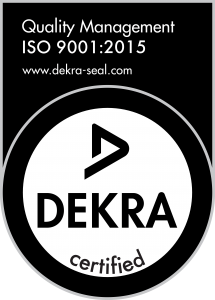860-829-2244
Shella Lemmons
@shellagjt9
Profile
Registered: 4 months, 2 weeks ago
Tips on how to Design Furniture That Balances Style and Comfort
Designing furniture is more than just creating items that look good—it’s about striking the proper balance between style and comfort. Whether you’re a professional interior designer, a DIY fanatic, or launching your own furniture line, achieving this balance is essential for creating functional, inviting spaces that people really enjoy. This is easy methods to design furniture that does not sacrifice comfort for aesthetics—or vice versa.
1. Start with the Consumer in Mind
The cornerstone of great furniture design is understanding who will use the piece and the way they’ll use it. Consider the demographic: Are you designing for younger adults in compact apartments, households with children, or professionals working from home? Think about their lifestyle, preferences, and daily needs.
For instance, a settee for a family room ought to prioritize plush seating and durable fabric, while a sleek armchair for a boutique hotel lobby may lean more toward aesthetics with refined lines and upscale materials. Knowing your viewers helps you tailor both comfort and style to suit their expectations.
2. Focus on Ergonomics
Comfort begins with ergonomics—the science of designing products to fit the human body. Chairs should support the natural curve of the spine, sofas ought to provide proper cushioning and depth, and work desks should sit at an optimum height to avoid strain.
Use high-quality foam, appropriate angles, and adjustable features when necessary. Even a modern, minimalist chair may be ergonomic if designed thoughtfully. Comfort shouldn’t be an afterthought—it needs to be integrated into the design process from the very start.
3. Choose the Right Materials
The supplies you select play a huge role in determining each comfort and style. Upholstery fabrics like cotton, linen, velvet, and leather can dramatically change the look and feel of a piece. For soft furnishings, choose supplies which might be breathable, durable, and soft to the touch.
For structural parts, such as wood or metal, consider the overall aesthetic of the space the furniture will inhabit. Natural woods can lend a warm, organic really feel, while metals add a modern or industrial edge. Blending textures—similar to combining a luxurious seat with sleek metal legs—can create visual interest while maintaining a balance between cozy and chic.
4. Mind the Proportions
A well-proportioned piece of furniture is visually interesting and physically comfortable. Overly bulky items can overwhelm a room and seem clunky, while under-sized designs could lack the help needed for everyday use.
When designing, pay attention to the relationship between completely different dimensions—seat height and depth, backrelaxation angle, and armrest placement. Proportion influences both how a piece feels and how it fits into the broader design of a room.
5. Let Function Guide Form
Functionality ought to drive the design process, particularly for pieces that serve multiple functions—like a sleeper couch, storage bench, or increaseable dining table. These designs usually require inventive problem-solving to make sure that added functionality doesn’t compromise style or comfort.
When unsure, go back to fundamentals: What problem is this piece solving? How can it enhance a consumer’s day-to-day expertise? Elegant, functional design could be just as stylish as ornate or conceptual pieces—if not more so.
6. Test and Refine
Once you’ve created a prototype or idea, test it out. Sit in the chair. Lie on the sofa. Use the desk. Acquire feedback from real users, and refine your design accordingly. What looks nice in a sketch might not always feel nice in real life.
Prototyping allows you to make small adjustments that can significantly improve consumer comfort—comparable to adjusting cushion firmness, seat height, or the curve of a backrest. Testing also ensures that your stylish design holds up under real-world conditions.
Conclusion
Designing furniture that balances style and comfort is each an art and a science. By understanding your customers, prioritizing ergonomics, selecting the precise materials, and testing your designs, you'll be able to create pieces that are not only visually stunning but also genuinely enjoyable to use. After all, the most effective furniture invites individuals to calm down, join, and really feel at home—without ever having to choose between form and function.
Here is more info on wood working have a look at our own website.
Website: https://constructionreviewonline.com/top-companies/top-construction-software-companies/
Forums
Topics Started: 0
Replies Created: 0
Forum Role: Participant

